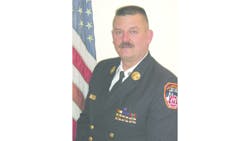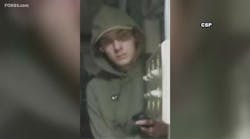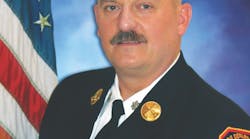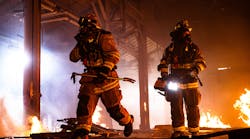I have written before about radios and their tactical importance to firefighters at the scene of a fire or other emergency operation. Let me start by stating that there is no reason for a firefighter to ever enter a burning building without a radio. The days of a team sharing a radio are long gone. Every firefighter, officer and chief needs to be radio equipped, period.
Now that we have that settled, let’s talk a little bit about the proper and effective uses of the radio.
No one-armed firefighters
I want to start by asking those of you who have a radio, how do you carry it? Do you hold the radio in your hand? Do you have a radio pocket on your turnout coat or do you wear the radio in a shoulder strap with a remote microphone/speaker?
The reason I ask is that if you are carrying your radio in your hand, you are a one-armed firefighter. You must find a place to stash the radio when climbing ladders, dragging victims, etc. Second, if you fall or drop the radio, it is gone. And third, by holding the radio, you are exposing this expensive piece of equipment to heat, smoke and water, which are not good for its effective operation.
If you carry the radio in a coat pocket, it almost looks good, until you take your coat off to cool down after the fire or, again, if you miss the pocket and drop the radio. If you didn’t see this coming, you are asleep.
I believe the best, safest and most effective way to carry a portable fireground radio is in a leather case attached to a shoulder strap worn over the firefighter’s head and on a shoulder, with a remote microphone positioned at the top of the strap near the top snap or clasp on the turnout coat. This places the radio in a safe area, protected from heat, smoke and water. It also keeps the radio with the firefighter, no matter where he or she goes. The firefighter never needs to take off the radio or go and find his or her coat to use it. This is a very “secure” way of carrying and using the radio.
The next important issue for effective radio usage is having a radio identity. This identifies who you are when you transmit and receive messages. Some departments use the apparatus or company number in conjunction with each member’s assignment or riding position. Others use tactical positions as the radio identity. Whatever the system is that you use, every firefighter must know who they are on the radio and use that identity for every transmission.
One of the best ways to implement and use that system is to label each radio and have each radio used by the firefighter who occupied the seat or riding position on the apparatus. For example, if you have six seats on your engine, the radio charger should be near or preferably on the apparatus. The six radios would be labeled “E587-OFFICER,” “E587-DRIVER,” “E587-NOZZLE,” “E587-BACKUP,” “E587-DOOR” and “E587-CONTROL.” The firefighter who grabs the “NOZZLE” radio from the charger will now transmit and receive messages as “E587-NOZZLE.” A simple transmission might sound like this: “E587-NOZZLE calling E587-DRIVER.” You can take this a step further and have each of the firefighter positions sit in the same seat for every response. Foe example, the nozzle firefighter sits directly behind the officer and the backup firefighter sits on that same side of the apparatus facing the nozzle firefighter.
Another important issue with radios is the actual usage of the radio to transmit messages. At most fire and emergency operations, there are several people talking on the radio and several others trying to get their messages through as well. This is all taking place on the same frequency or channel and every firefighter must wait their turn to get onto the channel.
The most important rule for this tactic is to LISTEN. Listen to the radio and wait for a break in the conversation between the two firefighters who are already talking. Do not simply wait for one of them to end their transmission. If you jump in and transmit your message, you may interfere with, or “step on,” the firefighters who are already talking. When it sounds like both ends of the conversation are over, then and only then should you begin your transmission. If you transmit a message and you do not get a response from the firefighter you sent the message to, another firefighter may have “stepped on” you and your message did not go through. Simply wait and listen again until that conversation is over and resume your transmission.
Carrying a radio is important for every firefighter. But knowing how to properly listen, understand, transmit and use a fireground radio requires much more than turning it on. Over.
Chief Salka takes a candid look at news and events impacting the fire service in his blog “The Fire Scene” at http://www.firehouse.com/blogs/the-fire-scene.
John J. Salka Jr. presents “Chief Officers Combat School” and “Rapid Intervention School” at Firehouse World 2015.
pull quote:
There is no reason for a firefighter to ever enter a burning building without a radio.
JOHN J. SALKA Jr., a Firehouse® contributing editor, is a retired FDNY battalion chief who was commander of the 18th Battalion in the Bronx. Salka has instructed at several FDNY training programs, including the department’s Probationary Firefighters School, Captains Management Program and Battalion Chiefs Command Course. He conducts training programs at national and local conferences and has been recognized for his firefighter survival course “Get Out Alive.” Salka co-authored the FDNY Engine Company Operations manual and wrote the book First In, Last Out – Leadership Lessons From the New York Fire Department. He also operates Fire Command Training, a New York-based fire service training and consulting firm.
Connect with John
Email: [email protected].
Website: firecommandtraining.com






